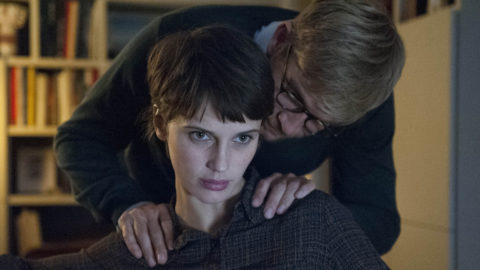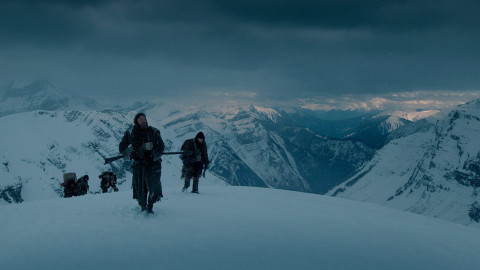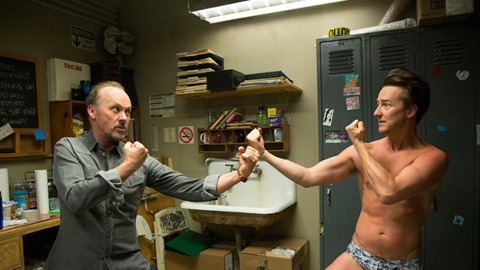By Jordan Cronk in the January-February 2018 Issue
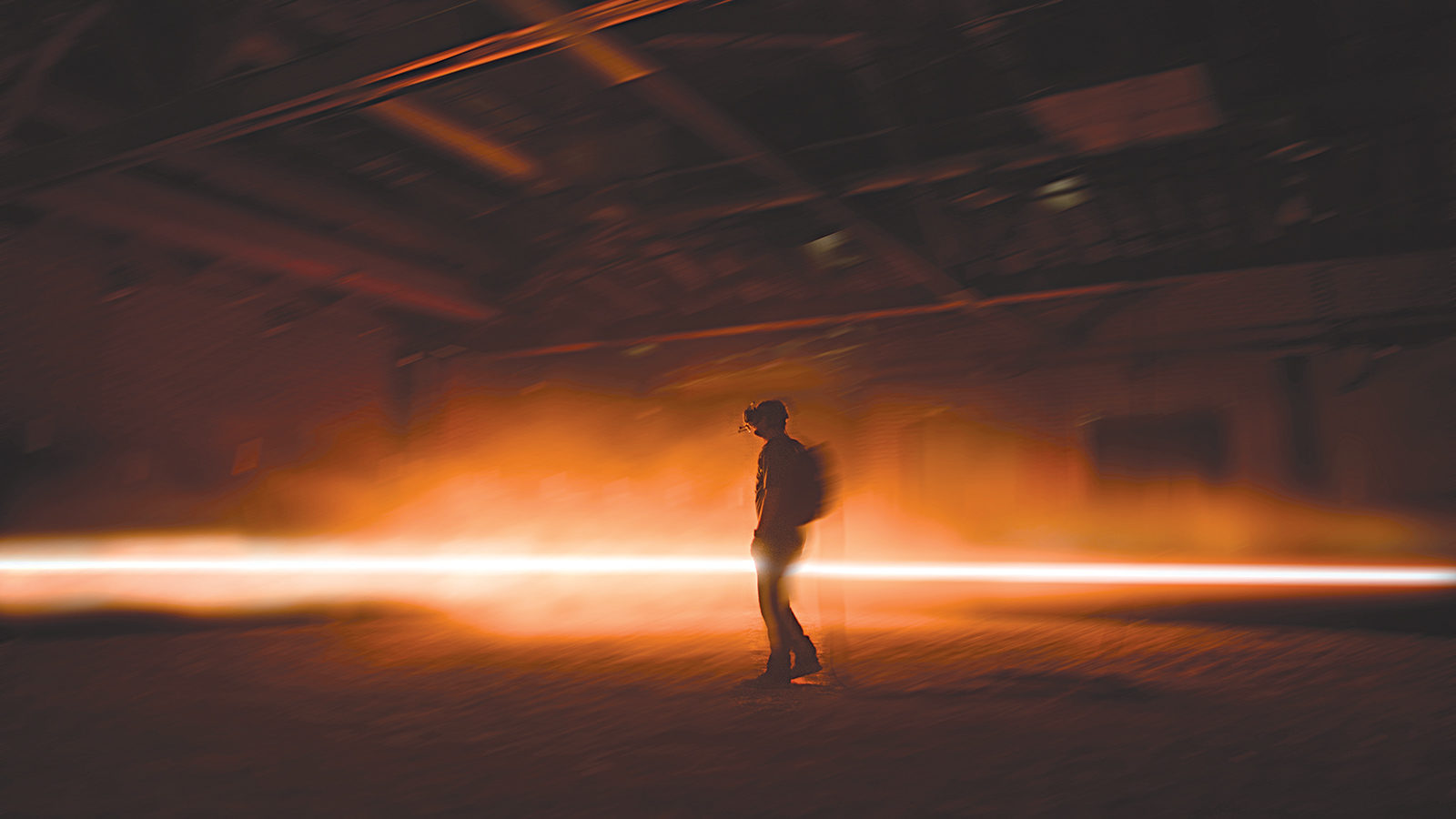
Ready to Wear
Alejandro G. Iñárritu’s Carne y Arena turns the suffering of border crossings into a consumable VR experience
Roger Ebert was fond of referring to cinema as “a machine that generates empathy.” In the last few years, the term “empathy machine” has been co-opted by proponents of virtual reality technology. In the artist’s statement that accompanies his new VR installation Carne y Arena (Virtually Present, Physically Invisible), an ambitious attempt to digitally re-create the process of illegally crossing the U.S.-Mexico border, Alejandro G. Iñárritu goes one step further, outlining not simply an urge to engender the viewer’s empathy, but a desire to prompt a full-bodied response through “direct experience.”
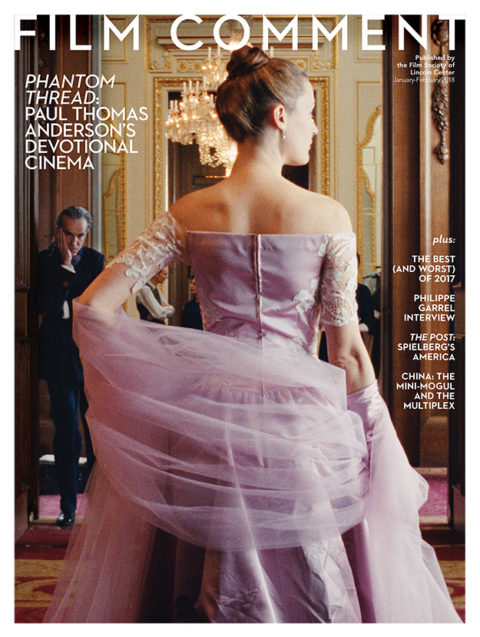
From the January-February 2018 Issue
Also in this issue
In interviews, Iñárritu has been wise to put some distance between the two mediums, telling The Hollywood Reporter that virtual reality is “[everything] cinema is not.” Elsewhere, in his artist’s statement, he explains that the intention of the project is “to explore the human condition in an attempt to break the dictatorship of the frame, within which things are just observed.” Setting aside the presumed sincerity of the enterprise, these statements reveal a key contradiction in Iñárritu’s thinking, and prove additionally telling of his conception of virtual reality and his understanding of cinema as both medium and machine.
By its very design, Carne y Arena—currently on view at the Los Angeles County Museum of Art, following its premiere at last year’s Cannes Film Festival and stopover at the Fondazione Prada in Milan—endeavors to reconcile two seemingly incompatible extremes: the demands of commerce and the nuances of empathy. With regard to the former, it’s safe to say no expense was spared. At Cannes, the installation’s multi-room configuration was constructed inside an airplane hangar; in its current iteration the work is housed within LACMA’s premium-priced Broad Contemporary wing. (As I’ve only seen the LACMA exhibition, the following observations will be limited to what I experienced—though on the evidence of festival reports, I’m proud to say that my walk-through, lacking both complimentary snacks and Perrier, was the more gruelingly authentic experience.) Comprised of a concrete-walled, temperature-controlled holding chamber, a dirt-lined warehouse where barefoot viewers are strapped into a VR harness, and a dimly lit corridor flanked on either side by an actual piece of the border wall and a procession of video monitors featuring testimonials from the real-life immigrants who inspired Iñárritu, the exhibition is at once impressively staged and tactlessly conceived.
Coming from a director whose recent films (namely Birdman and The Revenant) have traded the narrative complexities of his early work for technical acrobatics and sensory overload, this is hardly surprising. Only a self-styled auteur with high-art aspirations could earnestly devise such an elaborate installation while systematically reducing its message to a series of setpieces and loaded binaries. Its parenthetical subtitle alone is an affront to thematic subtly, to say nothing of the egregious “U.S. / T.H.E.M.” acronym that graces the exhibit’s logo: a heart-shaped map of the border with arteries tracing the region’s topography.
After signing a two-page waiver exempting the museum from legal liability, you’re escorted into the frigid detention chamber, replete with knee-high metal benches, tattered shoes, and stray objects gathered from the Sonoran Desert. Instructions on the wall tell you to remove your shoes and place them in an adjacent locker for safe-keeping, and to wait for an alarm to sound, signaling you to enter the next room. At this point you presumably should already be in a state of contemplation, reflecting on the harrowing journey thousands of immigrants have embarked upon only to be shuttled unceremoniously into a similar holding cell. Here you sit just long enough for the temperature to turn vaguely disagreeable before a siren wails and you approach the main attraction: a near-vacant room covered in sand. (Iñárritu’s title translates to Meat and Sand. I’ll let your imagination run wild with what the meat might be.) Across the way two technicians await to strap you into a backpack and helmet; proceeding to explain the realistic dimensions of your forthcoming experience, they assure you that they’ll be shadowing you throughout the six-and-a-half minute simulation, in case you become overwhelmed by Iñárritu’s vision and decide to dart off across the desert and into a wall.
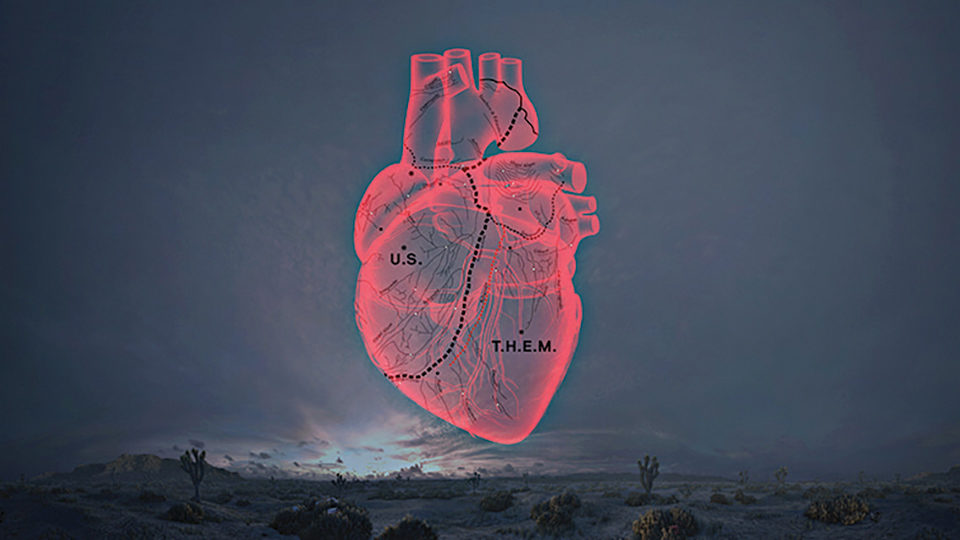
Once the headpiece is in place, your experience begins, opening at dusk in the middle of the desert, shrubs at your feet and mountains in the distance. One of the draws of VR is the ability to move freely through the visual space, approaching the action or narrative in any manner you see fit. For a moment I simply stood in place and looked around, taking in the details of cinematographer Emmanuel Lubezki’s 360-degree, hi-definition imagery. Ready or not, a prefab narrative soon intrudes as the sound of helicopters whir overhead (ambient sound and effects are piped directly into your helmet) and searchlights dart across the landscape. Over the horizon, a group of immigrants emerge, fleeing from a fleet of patrol vehicles. Once surrounded, the migrants—men and women ranging from their teens to middle age—scatter and hide as the guards threaten them at gunpoint.
Circling the action, I spent some time watching as an older woman lay wounded behind some bushes and as an uncooperative young man was pinned against a nearby police SUV. With so much screaming and shouting between the various parties (in both English and Spanish), it was difficult to make out more than a handful of stock phrases (“Hands up!” “Get down!” Don’t move!” etc.). Rather than get too close to the action, which only revealed the limitations of the technology (even motion-captured faces can’t help but look like video game avatars up close), I eventually stood back and surveyed the interlocking narratives. At one point, in a ridiculous stab at magical realism, a banquet table appears in the sand where a few migrants sit angelically as their comrades plead for their lives in the periphery. Soon enough, however, the violence escalates and you, unsuspecting interloper, are spotted by a patrolman who sticks his rifle in your face and demands that you get on your knees. I did nothing of the sort, and lo and behold a bright light flashed, the sun rose, and after a few minutes of video testimonials and a glance at the guest book, I stumbled out to the courtyard where patrons sipped $15 cocktails and tourists posed with the museum’s famed Urban Light exhibit.
Carne y Arena’s topical posturing and self-important sloganeering has already earned Iñárritu a Special Achievement Oscar, while the exhibit’s reservation calendar is booked months in advance. But who exactly is Carne y Arena for? Its $55 admission fee and air of exclusivity aren’t exactly inviting for those outside the art-world bubble. As a VR experience, it’s only intermittently transporting, unintentionally confirming that cinema’s imaginative dimension—a crucial ingredient for any visual medium endeavoring to break the dictatorship of the frame—has yet to find a strong corollary in the virtual realm. (For a better, more visceral and affecting take on the same subject I’d recommend Joshua Bonnetta and J.P. Sniadecki’s collaborative feature El mar la mar, set for release later this year, which employs an abstract visual syntax to more acutely mediate the issue’s thornier aspects.)
Considering its itinerary thus far, it stands to reason that the majority of those who will end up visiting the exhibit will be of a well-to-do, left-leaning nature—a public, in other words, predisposed to Iñárritu’s otherwise noble message. At its best, Carne y Arena is a novel diversion, forgoing the finer points of politics in favor of brute force and blunt moralizing. At its worst, it turns empathy into a self-congratulatory gesture, casually reinforcing the worldview of those privileged enough to sample its spectacle.
Jordan Cronk is a critic and programmer based in Los Angeles. He runs Acropolis Cinema, a screening series of experimental and undistributed films, and is co-director of the Locarno in Los Angeles film festival.



